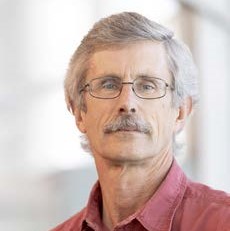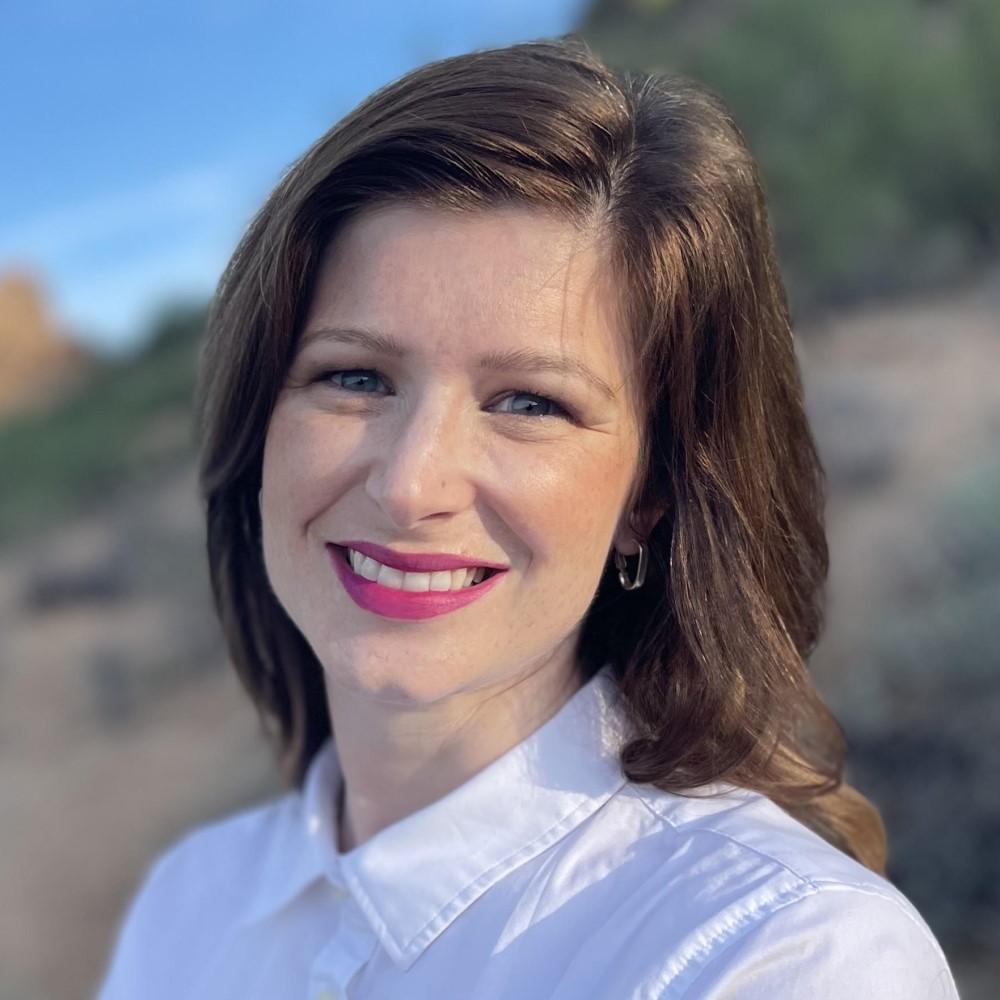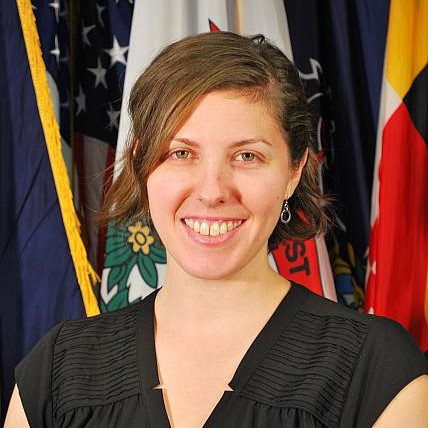Concurrent Session IV | May, 8 | 4:00 – 5:30 PM MT
Breakout 1 | Breakout 2 | Breakout 3 | Breakout 4 | Breakout 5
Return to Schedule
Session A4
NEPA Caselaw Update | NEPA
4:00 – 5:30 PM
| About the Presentation |
|
The panel is based on a paper that reviews substantive National Environmental Policy Act (NEPA) cases issued by the United States Courts of Appeals in 2022. The implications of the decisions and their relevance to NEPA practitioners will be explained. This session will summarize the more detailed paper prepared for this session. The paper briefly explains, with an emphasis on the substantive NEPA findings, each opinion issued by the U.S. Court of Appeals. The paper identifies statistics regarding the NEPA appellate opinions, such as a twelve-year record of NEPA cases, organized by circuit, and by year. The paper also identifies the agencies involved in each case and presents statistics relevant to the agencies; the paper further identifies the prevailing ratio of federal agencies, including by agency and by document type (categorical exclusion, environmental assessment, environmental impact statement). The paper analyzes the trends in the court opinions involving NEPA for 2022, with an emphasis on substantive NEPA practice, and by the grouping of the cases.
Finally, each court opinion is paraphrased and organized in a manner easy to read for practitioners to find the court's ruling. Appellate opinions are grouped and analyzed by agency. Past trends include challenges to purpose and need, alternatives considered, public comment, scientific impact assessment methodologies, GHG emissions and climate change impact assessment, incomplete or unavailable information, determination of significance, segmentation, duty to supplement, connected actions, federal actions, cumulative impact assessment, mitigation, monitoring, and adaptive management. Suggestions for improving the implementation of the NEPA process and to meeting current challenges are offered, looking ahead to the future with a renewed emphasis on one of the world's oldest and most forward-looking environmental laws.
Session Objectives:
- Gain knowledge of NEPA Case Law Trends at the Federal Appellate Level from 2022.
- Understand common pitfalls and best practices as represented in the 2022 cases.
- Improve NEPA practice through an understanding of accepted impact assessment practices, as interpreted by the Federal Appellate Courts.
|
| About the Moderator |
|

Fred Wagner
Partner
Venable LLP
Fred Wager focuses on environmental and natural resource issues, associated with major infrastructure, mining, and energy project development. Fred was appointed chief counsel of the U.S. Federal Highway Administration (FHWA) during the Obama administration. Fred began his career as a trial attorney in the Environment Division of the U.S. Department of Justice. He also served as a special assistant U.S. attorney in the Misdemeanor Trial Section of the U.S. Attorney's Office for the District of Columbia. Prior to joining Venable, he spent more than 20 years in private practice at a national law firm focusing on environmental and natural resources issues.
|
| About the Speaker(s) |
|

P.E. "Pam" Hudson, Esq.
NAVFAC SW
Department of the Navy Office of General Counsel
An NAEP member since 2013, P.E. "Pam" Hudson serves as the Senior Associate Counsel for Naval Facilities Engineering Systems Command Southwest. Prior to joining NAVFAC, Ms. Hidson served as Counsel for Cibil Engineer Corps Officers School, where a majority of her portfolio notably included environmental impact assessment legal sufficiency reviews and the Nacy's environmental law training program. Since 2013, Ms. Hudson has authored fifteen federal agency, academic and peer-reviewed articled, which have been cited in the Federal Register, on agency websites and journals, academic journals, and in news articles. She has twenty years of environmental impact assessment experience; from 2013-2015, she served on NAEP's committee for the CEQ's Pilot Project on Best Practice Principles for Environmental Assessments. Prior to joining the Office of General Counsel, she practiced at Kilpatrick Stockton, LLP, in Atlanta, Georgia, and Roetzel & Andress in Naples, Florida. She interned as a federal clerk for the Northern District of Florida for the Honorable Robert Hinkle. Ms. Hudson is an alumna of Florida State University School of Law, where she was the Beverly Stout McLear Environmental and Land Use Scholar. Ms. Hudson retired from the Navy as Commander (Oceanography).
*Ms. Hudson's views are hers alone, and do not reflect the views of the Department of Defense or the Navy.
|
|

Charles (Chuck) Nicholson
Senior Environmental Planner/Scientist
HDR
Dr. Nicholson has been a NAEP Member for over 10 years and is an elected NAEP Board Member and chair of the NEPA Practice Group. Chuck has 43 years of professional experience in the environmental and natural resources fields and 23 years as a NEPA compliance specialist. He has extensive experience in the preparation of EIS, EA, and CE documentation for a wide range of actions. Chuck earned his Ph.D. in Ecology & Evolutionary Biology from the University of Tennessee, Knoxville in 2004, an MS in Wildlife Management from the University of Maine in 1978, and a BS in Wildlife and Fisheries from the University of Tennessee, Knoxville in 1975.
|
Back to Top
Session B4.1
Addressing Climate Resiliency with Transportation Agencies | Transportation
4:00 – 5:00 PM
| About the Presentation |
|
Dewberry is proposing a panel on how transportation agencies are addressing climate resilience. Pending approval from New Jersey Department of Transportation (NJDOT) and NJ Turnpike Authority (the Authority), this panel will discuss how transportation agencies are integrating resilience considerations into their decision-making processes such as planning, design requirements, maintenance, and operations to anticipate, prepare for, and adapt to changing conditions and withstand, respond to, and recover rapidly from disruptions. Climate change is leading to significant changes in climate patterns in New Jersey, as well as across the US and the world. The ongoing impact of worsening climate stressors, such as sea level rise, extreme heat, and precipitation, poses a threat to asset- and system-level functionality. Storms like Hurricane Irene (2011), Hurricane Sandy (2012), and Hurricane Ida (2021) have all directly impacted operations at NJDOT and the Authority, in addition to devastating local communities. This panel will focus on the creation of their Resilience Programs and where the agencies are headed.
|
| About the Moderator |

Scott Minnich, PE
Associate and Department Manager
Dewberry
Scott Minnich, PE, is an Associate and Manager of the Natural Resources Department for Dewberry’s Northeast Environmental Business Unit where he manages a team of engineers, ecologists, and biologists. He has 25 years of experience with roadway design, utility relocation, site layout, stormwater management, soil erosion and sedimentation control, waterway and bridge hydraulic analyses, dam inspection, dam design, waterway dredging, and regulatory permitting. Scott is partnering with New Jersey’s transportation agencies to prepare for climate stressors including sea level rise, extreme precipitation, storm surge, tidal inundation, and extreme heat. He is Vice Chair of the American Council of Engineering Companies (ACEC) New Jersey Chapter Land Use and Permitting Committee. Scott holds a bachelor’s degree in civil engineering from Lafayette College. He is a Professional Engineer in New Jersey and Pennsylvania.
|
| About the Panelists |
|

Joseph Livingston, PE
Supervising Engineer, Planning
New Jersey Turnpike Authority
Joe is the Supervising Engineer of the Planning Section in the New Jersey Turnpike Authority’s (Authority) Engineering Department. He has over 23 years of experience in highway and site design. He is responsible for advancing planning and conceptual design in support of the Authority’s Capital Plan; oversees the Right of Way group, Licenses to Cross applications, and Third Party reviews for both in-house and adjacent developments; and is leading the nascent Resiliency and Sustainability Programs. Joe is a graduate of Rutgers University with a Bachelor of Science in Civil Engineering and a licensed Professional Engineer in New Jersey.
|
Session B4.2
Determining Climate and Sustainability Benefits of Rail Projects Funded by the Bipartisan Infrastructure Law | Transportation
5:00 – 5:30 PM
| About the Presentation |
|
With the passage of the Bipartisan Infrastructure Law (BIL), Congress made the largest investment in passenger rail in decades, if not ever. Determining the climate benefits of projects funded through BIL will be important to determine exactly how passenger rail, and increased use of passenger rail, can reduce the transportation sector's greenhouse gas emissions. BIL funding will lead to new passenger rail service requiring new or renovated rail stations, upgrading of rail infrastructure, and potentially new rail lines. These projects may contribute to GHG reductions through modal shift opportunities, but how will FRA measure potential climate benefits? What provisions within BIL contribute to addressing climate change? How does the NEPA process account for these benefits and what are the impacts of construction? What other BIL funding impacts climate and sustainability issues? While the experiences of FRA projects are the focus of the presentation, analytical methods and approaches are likely to be of interest to the broader environmental community.
Topics for the presentation include:
- How to assess the GHG reduction benefits from possible modal shift to rail from air and road from passenger rail expansion plans in the Federal-State Partnership for Passenger Rail programs.
- Construction emissions analysis and embedded carbon considerations.
- Measuring emissions benefits from the locomotive replacement provision in the Consolidated Rail Infrastructure and Safety Improvements grant program.
- Determining resilience in FRA grant programs for rail improvements.
- Quantifying climate and sustainability impacts in project analysis and evaluation.
|
| About the Speakers |
|

Michael Johnsen
Snr. Advisor for Climate and Sustainability
Federal Railroad Administration
Michael Johnsen serves as FRA's Senior Advisor on Climate and Sustainability and has been with FRA for over 9 years. Mike has worked on environmental issues his entire career with non-profits, private consulting, and with the Federal government where he has worked in the Department of Transportation for 24 years. Prior to his current advisor position, Mike supervised the NEPA process for FRA grant programs, including the Brightline Miami to Orlando project and the Texas Central Railroad bullet train in Texas. Mike holds a BS degree in Natural Resource Management from the University of Maryland and an MS degree in Environmental Science and Policy from Johns Hopkins University.
|
|

Lana Lau
Supervisory Environmental Protection Specialist
Federal Railroad Administration, Office of Environmental Program Management
Lana leads Federal Railroad Administration’s National Environmental Policy Act Policy Team. The team develops NEPA policy and guidance and provides environmental compliance subject matter expertise and technical support to FRA program offices and grantees. Prior to joining FRA, she spent 13 years with the Federal Highway Administration where she prepared NEPA documents and obtained environmental permits for projects of all levels of complexity, and led program areas including Planning and Environment Linkages and the Every Day Counts-5 Virtual Public Involvement team.
|
Back to Top
Session C4.1
Water Loss Impacts on Utilities and Watersheds | Water
4:00 – 4:30 PM
| About the Presentation |
|
This study examines the impact of water loss on utilities and ways to reduce the impact based on water audits at various municipalities over the last five years. Non-Revenue Water (NRW) is the water withdrawn from a source that does not generate revenue. There are three main components that makeup NRW: 1) unbilled authorized consumption; 2) apparent losses; 3) real losses. The water loss in these categories is directly related to loss of revenue. As the definition describes, apparent losses consist of meter inaccuracies, systematic handling errors, and unauthorized consumption. With water wars and critical droughts at the forefront of today's discussion, it is even more important to grasp where our water is going. The EPA estimates national water loss averages 16 percent ranging as high as 50 percent.
This presentation will discuss aging infrastructure and ways to reduce "real losses" through leak detection programs and optimizing "apparent losses" through metering programs.
|
| About the Speaker |
|

Alicia Pajares, PE, QWLA
Senior Water Resources Engineer
AECOM
Alicia is a senior water resources engineer at AECOM with more than 11 years of experience in engineering planning. She has led water loss studies, regional and local demand and flow projections, and water supply plans.
|
|

Blongshia Cha
Watershed Program Specialist
USDA- NRCS
Blongshia Cha is a Watershed Program Specialist for the Natural Resources Conservation Service in the state of Colorado. She has been with the agency for 9 years and currently administers the Watershed Protection and Flood Prevention (WFPO) Program, the Watershed Rehabilitation Program (REHAB), and the Emergency Watershed Protection (EWP) Program.
|
Session C4.2
Advancing Water Resource Planning through a More Integrated Environmental Approach | Water
4:30 – 5:00 PM
| About the Presentation |
|
Instead of "planning by the numbers" or the "select and defend" approach to environmental planning, what if we, as an industry, pushed a paradigm shift toward meaningful environmental considerations earlier in the project development process? In some cases, this may even preclude the need for substantive environmental review, permitting, or arduous study because of a focus on avoiding environmental impacts. Wouldn't that be ok? In other cases, this would simply mean the project could advance in a more predictable way with fewer surprises and a more collaborative approach to planning. How would we do this?
This session will focus on how we can work together to install this shift in thinking and facilitate this more integrated planning approach to all types of projects and programs across our industry. Environmental considerations are often only a peripheral part of project planning and are often considered late in the process. What are the risks of not including a substantive environmental assessment in the early phases? Decisions may have to be revisited, resulting in the need to redo analyses, adjust designs, create completely new alternatives, or even more extreme changes due to anticipated environmental implications. As an industry, we need to drive a change to this "reactive" approach, lobbying for early environmental involvement in planning and implementing projects. Early environmental input can identify better alternatives and design modifications that can result in streamlining or even avoid permitting triggers. Likewise, involving environmental strategy early in the process can result in better-defined scopes of work, lower costs, a better awareness of necessary expertise, an understanding of how activities within the project are independent or connected, and clarity on the time required to obtain environmental clearance. In the end, involving environmental experts in the early phases of project development only makes sense.
This panel will include a mix of environmental, engineering, and program managers. The discussion will include such topics as:
- Engineer's perspective regarding the typical resistance and recognized benefits of early environmental involvement
- Risks of not obtaining environmental input early, supported by a crosscut of diverse project case studies
- Specific benefits to building environmental input into the main structure of the design and project delivery model, supported by specific examples
- Program manager's perspective on the value of this format and how to effectively influence a paradigm shift of thinking within local, agency, or other applicant capital planning
|
| About the Speakers |
|

Leslie Tice, CEP
National Director of Environmental Services in Water Business Group
HDR
Leslie Tice is a Certified Environmental Professional and HDR's national Environmental Director for its Water Business Group with 25 years of experience in CEQA, NEPA, and environmental programs. Leslie works with project and program teams to integrate planning processes. She develops teams to effectively collaborate across boundaries and with clients to break down barriers within planning. Leslie has been an active member of NAEP and various affiliate organizations for over 18 years and has served in many board positions over that time.
|
|

Blaine Dwyer, PE
National Director of Water Supply Management
HDR
Blaine's 40-year career has focused on river basin management, water supply, and endangered species programs in 15 states and 14 countries. He brings his clients a thorough understanding of integrated water management and NEPA compliance based on his experiences as both a 3rd-Party EIS consultant and as the Applicant's Engineer. He is known for his ability to facilitate effective planning and permitting programs among federal, state, and local governments; municipal, industrial, and agricultural water users; and non-governmental organizations.
|
Session C4.3
PFAS in Arizona Domestic Wastewater Treatment Plant Effluent and Biosolids | Water
5:00 – 5:30 PM
| About the Presentation |
|
Statewide characterization of per- and poly-fluoroalkyl substances (PFAS) in domestic wastewater treatment plant (WWTP) effluent and biosolids is essential to understand how much of these persistent, bioaccumulating pollutants may be discharging to Arizona waters, applying to farms, or disposing to landfills. Wastewater treatment plants serve as key points of potential accumulation that can be monitored to better understand how PFAS cycles in the environment. This screening was designed to characterize and quantify the occurrence of PFAS compounds in Arizona Pollutant Discharge Elimination System (AZPDES) permitted domestic WWTP effluent and biosolids. The ADEQ recruited domestic WWTPs from among the AZPDES-permitted facilities to voluntarily participate in this screening. From the 38 participating facilities, 38 treated effluent and 25 biosolid samples were collected in June 2022.
Samples were analyzed for 40 unique PFAS compounds using EPA Draft Method 1633. Draft Method 1633 is the first PFAS analysis method issued by the U.S. Environmental Protection Agency (EPA) for non-drinking water matrices including wastewater and biosolids and is recommended by EPA for use in National Pollutant Discharge Elimination System (NPDES) permits. Among the number of samples with detectable PFAS the 5 compounds most commonly found in detectable concentrations were PFHxA (97%), PFOA (92%), PFPeA (90%), PFBS (87%), and PFOS (84%) for effluent and PFOS (56%), PFOA (32%), PFDA (28%), NEtFOSAA (20%), and PFHxA (16%) for biosolids. This screening from the planning phase through the communication of the results serves as a great example of state partnership and collaboration with Arizona's regulated facilities statewide. This screening is the first step by ADEQ to prepare for forthcoming federal regulation and guidance on PFAS for AZPDES permitting.
Session Objectives:
- Inform the audience about the human health and environmental concern of PFAS in domestic wastewater treatment plant effluent and biosolids
- Share key actions planned by the EPA to safeguard communities from PFAS contamination that are relevant to AZPDES permits.
- Present new data from an Arizona statewide screening of 40 unique PFAS compounds in domestic wastewater treatment plant effluent and biosolids
|
| About the Speaker |
|

Corin Hammond, Ph.D.
Environmental Science Specialist, Surface Water Protection
Arizona Department of Environmental Quality
Corin Hammond is an Environmental Science Specialist for the Arizona Department of Environmental Quality. Dr. Hammond holds both a bachelor's and master's degree in chemistry and a Ph.D. in Soil, Water, and Environmental Science and previously served as a Water Process Control Chemist for the City of Phoenix. As a doctoral candidate, Corin authored three research articles published in peer-reviewed scientific journals and is a recipient of the Karen Wetterhahn Memorial Award from the National Institute of Environmental Health Sciences for demonstrating qualities of scientific excellence. Her dedication to protecting and enhancing public health and the environment is made evident by her participation in balanced, leading-edge research and laboratory analysis over the past 21 years.
|
Session D4.1
Fiction or Feasible? Balancing changing policy goals with regulatory procedure | Climate
4:00 – 5:00 PM
| About the Presentation |
|
The Biden Administration has issued a policy regarding "clean energy" goals. Meeting these goals creates a requirement for additional infrastructure (e.g., charging stations, production facilities) as well as increased domestic production of specific natural resources (rare earth minerals), activities that are subject to compliance with various legal and administrative policies. As environmental professionals, we find ourselves charged with navigating the regulatory landscape within the context of stated political goals, often without updated implementing procedures. How does a practitioner balance application of various laws with modern policy initiatives? How can a project respond to changes in administrative policy during its development without losing valuable time or revisiting analysis?
While answers vary depending on whether the practitioner is representing a federal agency, a consultant advising clients, or a project applicant, there is no one right answer. With the potential for policy changes with each administration, the opportunity to spend time trying to satisfy changing policy perspectives is huge, and often introduces schedule expansion and legal challenges. This discussion will present a selection of the current "clean energy" initiative policies that influence current practice, such as Executive Orders 14037 and 14057; present a selection of contemporary projects in this scenario; and explore opportunities for integration. Audience questions and participation are welcomed.
Session Objectives:
- Cite current administrative policy regarding clean energy goals
- Be aware of at least one example where policy and implementation of laws are challenged to integrate
- Participate in discussions regarding how policy can be carried into existing project implementation processes
|
| About the Speaker |
|

Anna Kohl, CEP
Senior Environmental Project Manager
HDR
As an Environmental Project Manager at HDR in Alaska, Anna's work focuses on program-level environmental planning and NEPA compliance for infrastructure development projects. She is actively engaged in all technical discipline aspects pertinent to the NEPA process, as well as with agency and stakeholder coordination and communication. Active in NAEP, the Alaska NAEP Chapter, and as a Trustee for the Academy of Board Certified Environmental Professionals (ABCEP), Anna is committed to advancing the environmental practice through collaborative learning opportunities with colleagues. Anna has worked with public- and private-sector clients in Alaska for 22 years.
|
Session D4.2
Climate Change Program Evaluation Policy, Practice, and the Use of Results in U.S | Climate
5:00 – 5:30 PM
| About the Presentation |
|
This qualitative study tackles the fundamental issues that underpin program evaluation policy and practice concerning climate change, as well as the prerequisites for using evaluation evidence. The evaluation questions focus on the evidence regarding the existence and severity of problems, the programs used to address the issues, the relative effects and cost-effectiveness of the programs, and the accumulating evidence. The fundamental prerequisites for the use of evidence include the awareness of the evidence, the understanding of it, the capacity and incentives to use it, as well as the potential users. Studies from the US and other nations are used as examples, with a focus on evaluation strategies that respond to the aforementioned queries.
The evaluation questions focus on the evidence regarding the existence and severity of problems, the programs used to address the issues, the relative effects and cost-effectiveness of the programs, and the accumulating evidence.
|
| About the Speaker |
|

Omolade Erogunaiye, Ph.D.
Harris County Flood Control District
Omolade Erogunaiye works in the construction department of Harris County Flood Control District. She obtained her Ph.D. degree in Urban Planning and Environmental Policy at the Texas Southern University, Houston, Texas. Her areas of interest include environmental justice and equity, climate change, and planning for marginalized groups.
|
Back to Top
Session E4.1
Historic and Aging Water and Wastewater Systems: Case Studies | Cultural
4:00 – 5:00 PM
| About the Presentation |
|
The WIFIA Program and others like it are designed to address the nation's aging water and wastewater systems. Not only are many of these systems in need of repair, upgrades, or replacement, the WIFIA Program is finding that in many cases around the country that they are also potentially eligible for the National Register of Historic Places. This poses a unique challenge to utilities and communities in balancing the need to improve their water and wastewater systems and the potential demolition and/or modifications to potentially eligible historic resources. This presentation will explore several case studies from across the U.S., including the projects proposed, the assessment of resources, eligibility determinations, the assessment of effects, and mitigation measures. The session will end with a brief Q&A session and time for participants to share their experiences with similar situations.
|
| About the Speakers |
|

Alaina McCurdy
Physical Scientist
U.S. EPA, WIFIA Program
Alaina McCurdy has been with EPA's WIFIA Program administered by EPA Headquarters since 2017. She is responsible for completing the environmental review for WIFIA loans under that National Environmental Policy Act, as well as other federal cross-cutting authorities including the National Historic Preservation Act and Endangered Species Act. Alaina works with borrowers and communities across the country.
|
|

Ashley Longrie
Environmental Engineer
U.S. Environmental Protection Agency
Ashley Longrie has been with EPA's WIFIA Program since 2020. She works closely with other members of the WIFIA Program to complete environmental reviews, including consultation under the National Historic Preservation Act, for various WIFIA loans across the country.
|
Session E4.2
Lessons from the Daylight Factory | Cultural
5:00 – 5:30 PM
| About the Presentation |
|
From the "dark Satanic Mills" of the Industrial Revolution to the mega-factories of the 20th and 21st centuries, profit and productiveness have too often been the main factors shaping the design of industrial architecture. Such a market-driven bottom line often comes at the expense of the well-being of workers inside the workplace, the way the building affects the quality of the streetscape, and the health of the planet. As a corrective to these environmental afflictions, progressive industrial architects are now striving to build factories out of natural, sustainable materials; they are employing passive, energy-efficient means of introducing daylight and fresh air; and they are designing exteriors that enhance rather than ravage the surrounding space. The need for humane and healthy buildings encourages us to innovate. But we would also do well to learn from past practices, and we should bear in mind that the greenest building may be the one that is already there.
A case in point is the Swanson & Peterson furniture factory and showroom, built in 1929 on a street corner along the eastern fringe of Pasadena, California, and currently threatened with demolition. From the outside, this low-slung, subtly classical red brick building is perfectly unassuming. It is a model of quiet, human-scale, vernacular urbanism. Surprisingly, it opens onto a vast interior factory space, flooded with diffused natural light thanks to the huge steel sash windows in the walls, and to the rows of north-facing windows set into a dramatic sawtooth roof built of unadulterated wood. The building also features a passive system of air circulation, thanks to pivoting windows in the main factory space, as well as in the adjoining offices and furniture showroom. By the 1940s this type of Daylight Factory (with its extensive use of attractive, sustainable materials, and its highly efficient use of natural light and air) had fallen out of fashion.
The new norm in industrial architecture became the giant windowless box, built for no place in particular and relying on energy-intensive artificial lighting and air conditioning to facilitate round-the-clock production. This generic type is still the norm for factories worldwide, and also for many kinds of commercial buildings, such as the Home Depot recently built across the street from our former furniture works, or the car dealership that now threatens to replace it. How exactly did this classic daylight factory function? How does its design respond to the dry, sunny Southern California climate? And how might it be adapted and emulated in the age of climate crisis? I invite you to explore this piece of history with valuable lessons for future architects.
|
| About the Speaker |
|

Graham Larkin, Ph.D.
Architectural Historian
Sapphos Environmental, Inc.
Mr. Graham Larkin has more than 25 years of experience as a researcher, professor, and curator specializing in European and American art and architecture. In recent years, he has become a leading advocate for sustainable urbanism and safe mobility. Mr. Larkin has worked as a cataloguer and at the Canadian Centre for Architecture, Montreal; as a curator of European & American art at the National Gallery of Canada; as a teacher of undergraduate classes at Harvard and Stanford universities, and of graduate classes at the Azrieli School of Architecture and Urbanism at Carleton University, Ottawa; and as a researcher in Canadian federal departments (Aboriginal Affairs; Fisheries & Oceans; Public Health Agency).
|
Back to Top
Back to Schedule
|



















